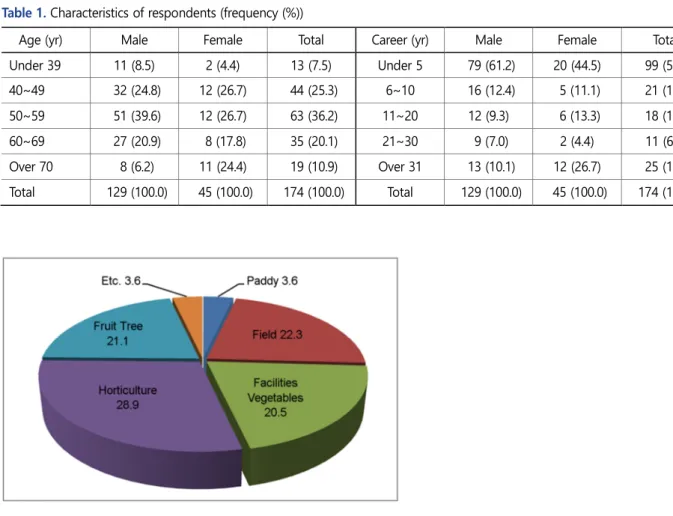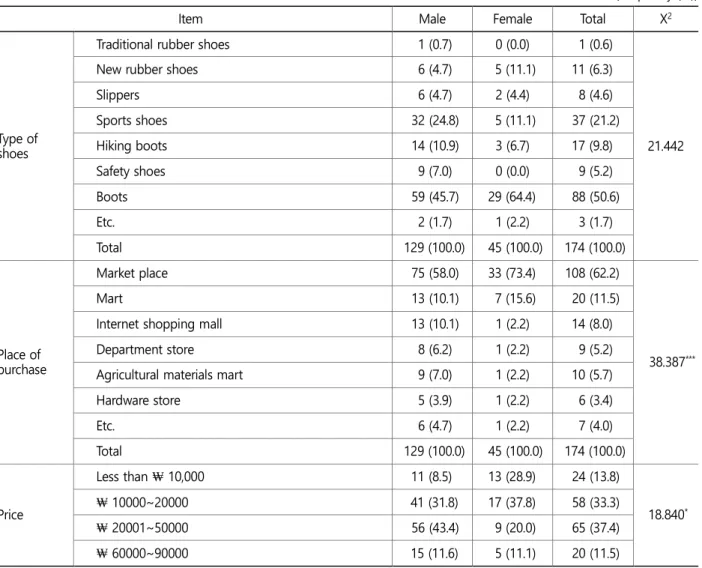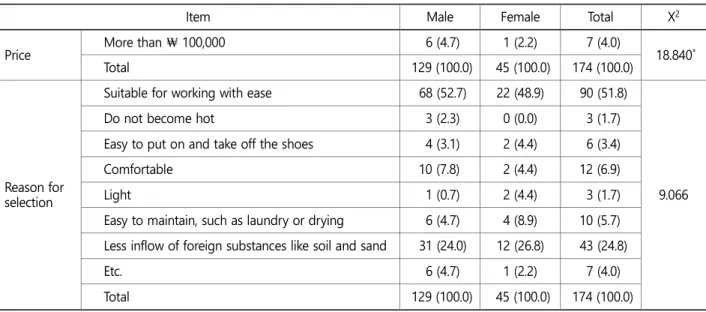JESK http://jesk.or.kr eISSN:2093-8462
A Design for Summer Safety Shoes for Agricultural Work Using a Survey
Kyung Suk Lee, Do Hee Kim, Young Soon Oh, Sae Loom Oh, Hye Seon Chae, Kyung Ran Kim Rural Development Administration, National Academy of Agricultural Science, Jeollabuk-do, 54875
Corresponding Author Kyung Suk Lee
Rural Development Administration, National Academy of Agricultural Science, Jeollabuk-do, 54875
Mobile : +82-10-9903-1835 Email : leeks81@korea.kr
Received : November 06, 2014 Revised : December 05, 2014 Accepted : May 19, 2015
Objective: This study aimed to find good design for summer functional farm shoes under the agricultural environment and working characteristics, which can help safe farm work and further promote the efficiency of working.
Background: Most accidents at farms were overturn accidents caused by slipping or falling, and it was found that the main factors which caused the overturn accidents were inappropriate work shoes for the working conditions. These inappropriate work shoes often cause overturn accidents in the rural areas with steep paths.
Method: A survey on work shoes was conducted with 174 farmers, and the outcome of this survey was used to find problems of work shoes and improvement ideas for the design of work shoes which can be used at farms.
Results: Regarding the form of farm shoes, the ankle height was set at 6 inches to prevent the bending of the ankle and the inflow of foreign substances. The size and groove of the pattern of the outsole were extended to prevent catching of foreign substances. In the upper part, polyurethane and cordura were used in combination to secure air permeability, which was pointed out as the reason for the discomfort during the work wearing existing work shoes.
Conclusion: Since farmers felt discomfort with the shoes which they were currently wearing, this study suggested a design of farm shoes by analyzing the important matters of the work shoes in development in order to improve such discomfort.
Application: This study can help develop farm shoes that would practically ease farmers' burden of working at farm worksites and keep them safe.
Keywords: Agricultural work shoes, Farmer, Summer shoes, Design
Copyright@2016 by Ergonomics Society of Korea. All right reserved.
○
ccThis is an open-access article distributed under the terms of the Creative Commons Attribution Non-Commercial License (http://creativecommons.org/licenses/by-nc/3.0/), which permits unrestricted non-commercial use, distribution, and reproduction in any medium, provided the original work is properly cited.


